Iran -- School-age
Iran
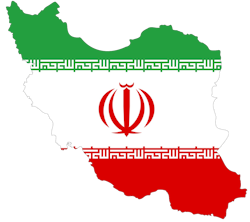
Official Name: Islamic Republic of Iran
Government Type: Islamic Republic of Iran
Capital: Tehran
County's inhabitants: Iranian
Abbreviation: IR, IRN
Currency: Iranian Rail
Official Language: The official language of Iran is Farsi (Parsi), modern Persian. There are many other languages: Turkic, Kurdish, Luri, Balochi, Arabic, Turkish, and other.
Religion: 89% of Iranians are Shia Muslims, 9% are Sunni Muslims, 2% are other religions that include: Zoroastrian, Jewish, Christian, and Baha'i.
Population: 88.55 million (2023)
Ethnic Groups: Persian, Azeri, Kurd, Lur, Baloch, Arab, Turkmen, and Turkic tribes
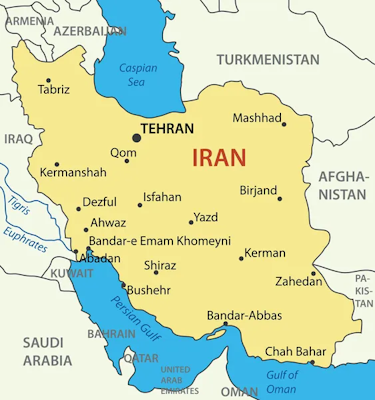
Iran is the second largest country in the Middle East (Saudi Arabia is the largest).
Iran is a mountainous country located in western Asia in the Middle East region. Iran has the longest land border of any country in western Asia covering 3,662 miles (5,894 km). It has land borders with Iraq, Turkey, Azerbaijan, Armenia, Turkmenistan, Afghanistan, and Pakistan. It has a total coastline of 1516 miles (2,440 km), there is the Caspian Sea in the north, and the Persian Gulf and Gulf of Oman in the south. It has maritime borders with six countries: Kuwait, Saudi Arabia, Bahrain, Qatar, Oman, and the United Arab Emirates.
The strategic position of Iran has made it an important country throughout its history.
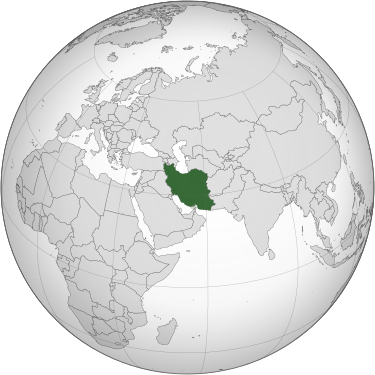
History
Iran was known as Persia until 1935. Before the name change Persia had a long history that stretches back thousands of years.
Alexander the Great’s conquests put an end to Persia as a world power. In the following centuries, Persia was ruled by the Seleucids, the Parthians, the Sassanians, the Romans, the Byzantines, and in 636 AD the Muslims.
In 1501, the state of Iran was founded. The largest and longest Iranian empire is called the Safavid Iran (1501 to 1736). It is often considered the beginning of modern Iranian history, It founder and first shah was Ismail I, who converted his people from Sunnite to Shite Islam and adopted the trappings of the Persian monarchy. It is considered the beginning of modern Iranian history,
Brief History of Iran Video
Government
Iran is a theocratic government, in which most policies are based on Islamic religious ideologies. The government is controlled by a religious figure called the Supreme Leader.
According to Iran's constitution Supreme Leaders (following Ayatollah Khomeini) are to be elected by the Assembly of Experts who are elected by Iranian voters to eight year terms. The Supreme Leader is the Commander in Chief, Head of State, and superintendent of the three branches of government (executive, legislature, and judiciary). Since 1979, Iran has only had two Supreme Leaders: Khomeini and Ali Khamenei.
The executive branch is the President, who is head of the government and answers to the Supreme Leader.
The judiciary branch's head is the Chief Justice who is appointed by the Supreme Leader. The Chief Justice hires, assigns, promotes, and fires judges
The legislative branch has two houses, the Islamic Consultative Assembly and the Guardian Council. The Consultative Assembly are elected by the country's citizens. The upper house is the Guardian Council which reviews legislation to determine if it is compatible with the principles of Islam. It has twelve members, half are selected by the Supreme Leader. The other half are jurists elected by the Consultative Assembly.
Flag of Iran
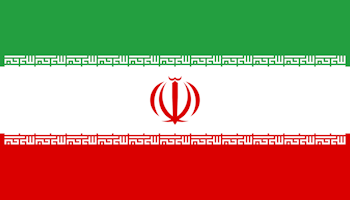
After Ayatollah Khomeini overthrew the Shah and his government he called for the removal of all symbols of the fallen monarchy. A new flag was introduced in 1980. The green, white, and red stripes were kept, along the bottom of the green strip and the top of the red strip is an Arabic inscription. In the center of the flag is the coat of arms of Iran.
Land
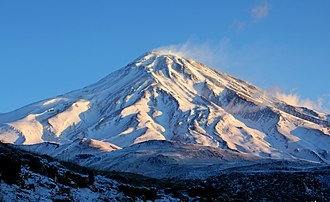
Mount Damavand is the highest peak in Iran and Western Asia at 5671 meters (18,624 feet).
Iran is one of the most mountainous countries in the world. There are two major mountain ranges in Iran: Alborz{Elburz}Mountain Range (extends west east parallel with the south shore of the Caspian Sea in a crescent-shaped arc for 560 miles (900 kilometers).
The Zagros Mountain Range extends from the Northwest to the Southwest.
Forested areas are mainly in the Northern coastal areas. The deserts are mainly on the Eastern half of Iran with two major deserts: Dasht-e-Kavir, great salt desert (central Iran toward East), Kavir-e-Lut (Southeast).
Farming and settlements are largely concentrated in the narrow plains or valleys in the west or north.
The lowest point Caspian Sea at 28 meters/92 feet below sea level.
Climate
In the northwest, are cold winters and heavy snowfall with subfreezing temperatures. In the Spring and fall are mild temperatures. Summers are dry and hot.
In the south, winters are mild and summers are very hot.
Plants
In the Elburz Mountains are: beech trees, oak trees, other deciduous trees, and conifers. In the Elburz and Zagros mountains grow wild fruit trees: almond, pear, pomegranate, and walnut.
Along the borders of the Dasht-e Kavir grows tamarisk and other salt-tolerant bushes.
Animals
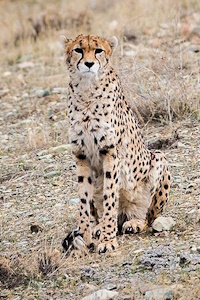
Iranian Cheetah (Asiatic cheetah) The Iranian cheetah existed from India to Saudi Arabia and Syria. Now this cheetah can only be found in Iran.
Iran's wildlife includes a variety of animal species, some are: Eruansian lynx bears, jackals, gray wolves, panthers, gazelles, foxes, and eagles.
Ten species of eagles seasonally in Iran. One species is the Golden Eagle.
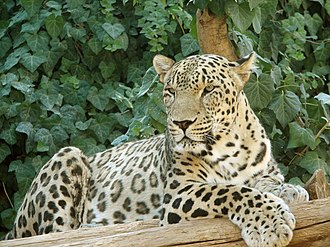
The Persian leopard is the world's largest leopard subspecies and live primarily in northern Iran.
Domestic animals in Iran include: sheep, goats, donkeys, cattle, horses, and camels. Also native to Iran are: pheasant, partridge, stork, eagles and falcons.
Iran Is Famous For
The Iranian Cheetah is only found in Iran.
Iran Products
Iran is an energy superpower. Iran's gas reserves is the second-largest in the world after Russia. It has the fourth largest oil reserves.
Iran's economy has been hit hard by a number of international sanctions (trade bans) against Iran imposed by a number of countries, especially the United States, The first sanctions were imposed by the United States when the shah was ousted in 1979. Iran's support of terrorism and its continuing effort to develop nuclear weapons has led to further sanctions in recent years by a number of countries.
Iran is known throughout the world for its Persian handwoven carpets. Carpet weaving is the most widespread handicraft in Iran and the best known craft abroad. Persian carpets are renowned for their richness of color and designs.
Things to Do
How to Make a Magic Carpet Create a design on canvas.
Crayola Iran Flag Map color page
Recommended Books

The Secret Message
by Mina Javaherbin

1001 Inventions and Awesome Facts from Muslim Civilization
by National Geographic




